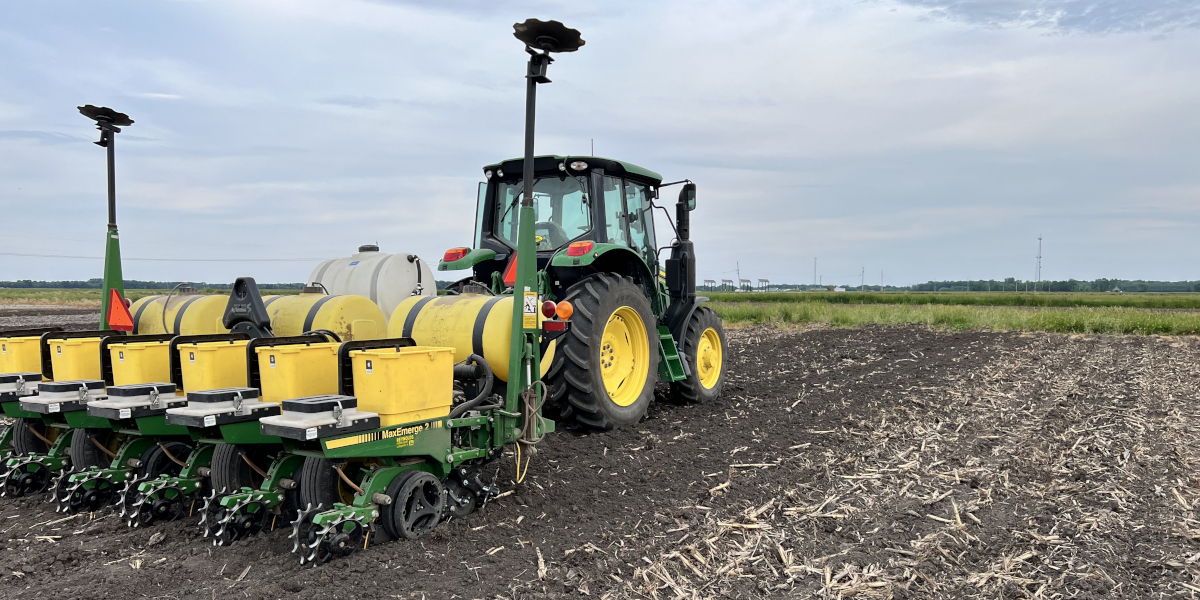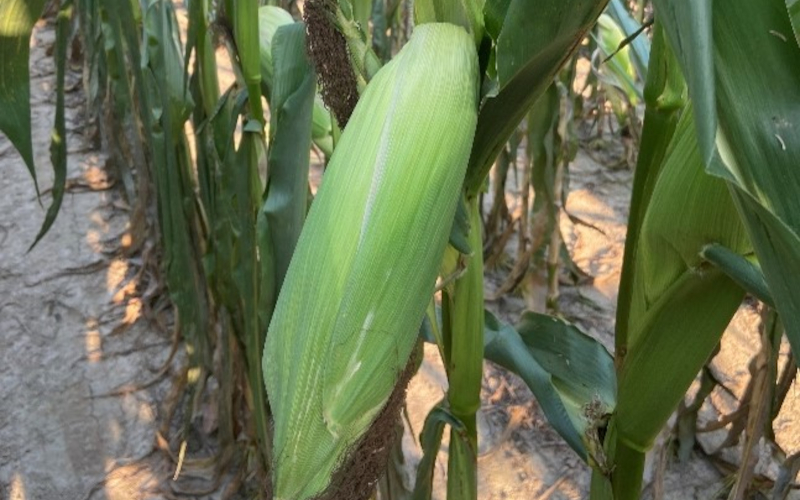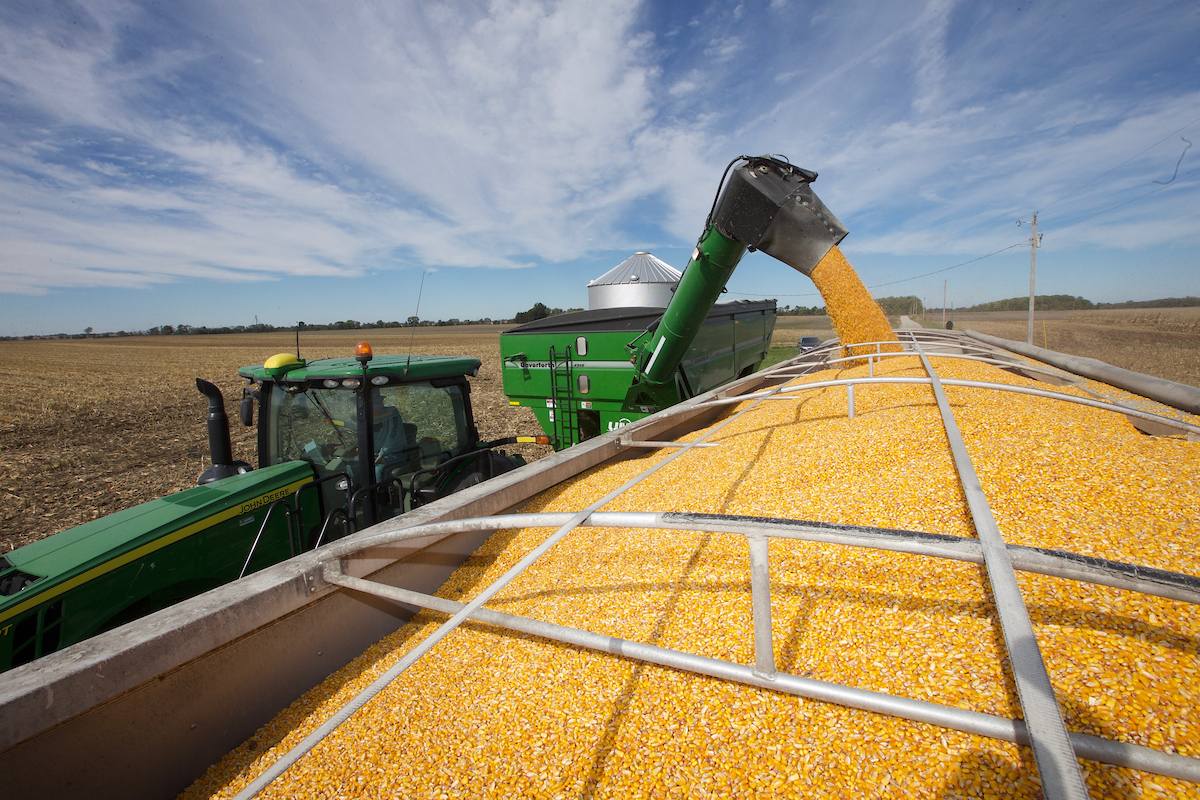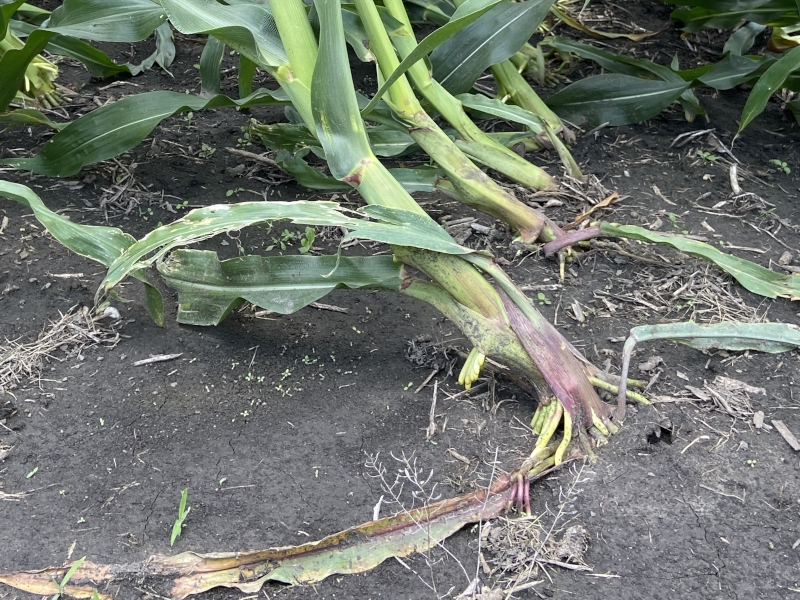Corn Harvest and the Importance of Watching for Ear Rots
As corn harvest approaches in Indiana, it is important to start monitoring and managing for the presence of ear rots. Ear rots can reduce corn yields, reduce kernel quality, and produce mycotoxins which are harmful to livestock and humans. Corn that may appear healthy and even has high yields at harvest can be impacted economically through dockages or load rejections due to the presence of mycotoxins. Many areas of Indiana experienced these issues in 2023 (e.g., Northern and Northeastern part of the state), largely due to cooler growing season temperatures, reduced heat unit accumulation, delayed plant maturity, poor grain dry down and delayed harvest.
In Indiana, five ear rots can lead to mycotoxin production in corn. They include Aspergillus ear rot, Gibberella ear rot (Figure 1), Fusarium ear rot, and Penicillium ear rot. Whereas, other ear rots like Diplodia (Figure 2) do not produce mycotoxins. They can cause the production of five different mycotoxins in association with the different ear rot: Aflatoxin (Aspergillus), Deoxynivalenol or as also called DON/vomitoxin and Zearalenone (Gibberella); Fumonisins (Fusarium), and Ochratoxin (Penicillium and sometimes Aspergillus). The crop protection network has a very good resource for distinguishing the different ear rots and understanding their causes.

Figure 1. Gibberella ear rot present on the tip of the corn ear prior to corn harvest in Whitley County, Indiana 2022.

Figure 2. Diplodia ear rot forming at the base of the ear prior to corn harvest in Randolph County, Indiana 2022.
To minimize both the yield and economic impacts of ear rot development in corn it is important to first assess field prior to harvest. This pre-assessment can 1) alert you to the potential severity of ear rot within various fields, 2) help with harvest and storage planning to prevent the problem from getting worse, and 3) provide any insights if certain hybrids are more impacted than others. Scouting fields can involve sampling multiple ears from multiple areas from the field, pulling back the husks, and examining the entire ear for the presence of ear rot symptoms. In addition, if you suspect high levels of ear rot, having harvested grain samples tested from a commercial lab prior to storage can be helpful. Potential problem areas my include fields damaged by insects or hail, fields with too much rain fall or significant drought stress, and fields in a continuous corn rotation.
As for managing ear rots, there is several methods available which apply to most ear rots. The first management method is hybrid selection. Selecting hybrids with reduced susceptibility to ear rots, improved insect resistance, and reduced “husk tightness” can assist in the management of ear rots. Harvest timing and combine settings are also useful management practices for reducing the impacts of ear rots. If ear rots are suspected, make sure to prioritize those fields for harvest and harvest those with the highest pressures first. When disease infected grain is left in the field and harvest is delayed, this will increase the risk of mycotoxin contamination. In addition, lightweight and damaged kernels likely contain higher levels of mold and mycotoxins, so adjusting combine settings to discard these kernels or using specialized equipment to sieve and clean the grain prior to storage or delivery can help. Grain drying and storage conditions are also important to consider when dealing with ear rots. Grain that is dried quickly to a moisture less than 13% and is stored in cool (~30⁰F) conditions can limit fungal growth and mycotoxin accumulation. Lastly, fungicide use can also be a helpful with reducing ear rots in corn, however, many products labeled to control foliar diseases can have minimal to no control on ear rots. In addition, fungicide application must be made at the R1 growth stage (silk emergence) when “green silks” are present.
Dan Quinn, PhD
Assistant Professor of Agronomy
Extension Corn Specialist
Purdue University
djquinn@purdue.edu
Darcy Telenko, PhD
Associate Professor of Plant Pathology
Extension Field Crop Pathology Specialist
Purdue University
dtelenko@purdue.edu






